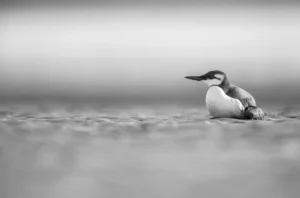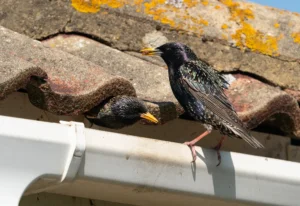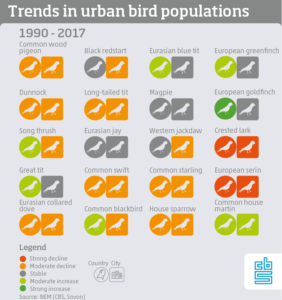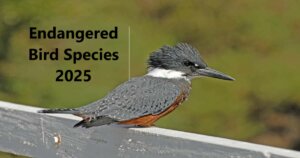How to Feed Those Wild Birds in Your Backyard: Expert Tips
Feeding wild birds in your backyard can be fun and rewarding. It helps support local wildlife and brings nature closer to home.
Birdwatching is a relaxing hobby that many people enjoy. By providing food, you can attract a variety of birds to your backyard. It’s a great way to connect with nature and learn more about the birds in your area. Plus, it can help birds find food when natural sources are scarce.
In this blog post, we will explore the best ways to feed those wild birds. You will learn what foods to offer and how to set up your yard to be bird-friendly. Whether you are a beginner or an experienced birdwatcher, these tips will help you create a welcoming space for your feathered friends.
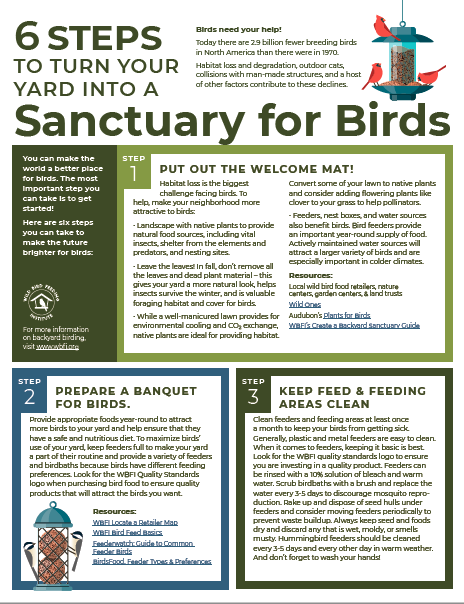
Credit: www.wilddelight.com
Choosing The Right Feed
Feeding wild birds can bring life and color to your backyard. Choosing the right feed is crucial. Different birds have different dietary needs. Providing the right food will attract a variety of birds. It will also keep them healthy and coming back for more.
Seed Types
Birds love seeds. Different seeds attract different birds. Sunflower seeds are a favorite. They attract cardinals, finches, and chickadees. There are two types: black oil and striped. Black oil seeds are easier to crack. They have more fat, making them ideal for winter.
Niger seeds are tiny and rich in oil. They attract goldfinches and siskins. Millet is another option. It attracts ground feeders like sparrows and doves. Mixed seed blends offer a variety. They attract a wide range of birds. Check the ingredients to avoid fillers like red millet.
Suet And Mealworms
Suet is a high-energy food. It is perfect for cold weather. It is made from animal fat. Many birds love it. Woodpeckers, nuthatches, and wrens are suet fans. You can buy suet cakes or make your own. Add seeds, nuts, or dried fruit for extra nutrition.
Mealworms are another great option. They are a protein-rich treat. Bluebirds, robins, and wrens enjoy them. You can buy them dried or live. Dried mealworms are easier to store. Live mealworms provide more excitement for the birds.
Offering a mix of seeds, suet, and mealworms will attract a variety of birds. It will make your backyard a bird haven.
Setting Up Feeders
Setting up feeders in your backyard can attract many wild birds. It’s a delightful way to bring nature closer to home. By providing food, you support local wildlife and enjoy birdwatching. This section will guide you on choosing and placing feeders.
Feeder Types
There are various types of feeders to consider. Each attracts different bird species. Here are some common types:
- Hopper Feeders: These feeders hold a large amount of seed. They are great for attracting a variety of birds.
- Tube Feeders: These are long and cylindrical. They are perfect for small birds like finches and chickadees.
- Platform Feeders: These flat feeders attract ground-feeding birds. They are easy to fill and clean.
- Suet Feeders: These are for suet cakes, which attract woodpeckers and nuthatches. They are best for winter feeding.
Feeder Placement
Where you place your feeders is crucial for attracting birds. Here are some tips:
- Visibility: Place feeders where birds can see them. Near trees or shrubs is ideal.
- Safety: Keep feeders away from predators. Cats, for example, should not have easy access.
- Cleanliness: Ensure feeders are easy to clean. This helps prevent disease among birds.
- Weather Protection: Position feeders where they are sheltered from strong winds and rain.
By setting up feeders correctly, you create a welcoming environment. Birds will flock to your backyard, providing endless entertainment and joy.
Maintaining Feeders
Maintaining bird feeders is essential for keeping your backyard birds healthy and happy. Regular maintenance ensures the feeders stay clean, free from mold, and safe for birds to use. Let’s explore the key aspects of maintaining bird feeders.
Cleaning Routine
A regular cleaning routine is crucial for your bird feeders. Birds can be messy eaters, and leftover food can attract pests. Follow these steps to keep your feeders clean:
- Remove the feeder from its hanging spot.
- Empty any remaining birdseed or food.
- Use a brush to scrub the feeder with warm, soapy water.
- Rinse thoroughly to remove all soap residue.
- Dry the feeder completely before refilling it with birdseed.
Cleaning your feeders once a week is ideal. This routine helps prevent the spread of diseases among the birds.
Preventing Mold
Mold can be harmful to birds. It is important to take steps to prevent mold in your feeders. Consider the following tips:
- Store birdseed in a cool, dry place.
- Only fill feeders with enough seed for a few days.
- Check feeders regularly for signs of mold.
- Clean feeders more often during wet or humid weather.
- Use feeders with good drainage to keep seed dry.
By following these tips, you can ensure a safe and healthy environment for your backyard birds.
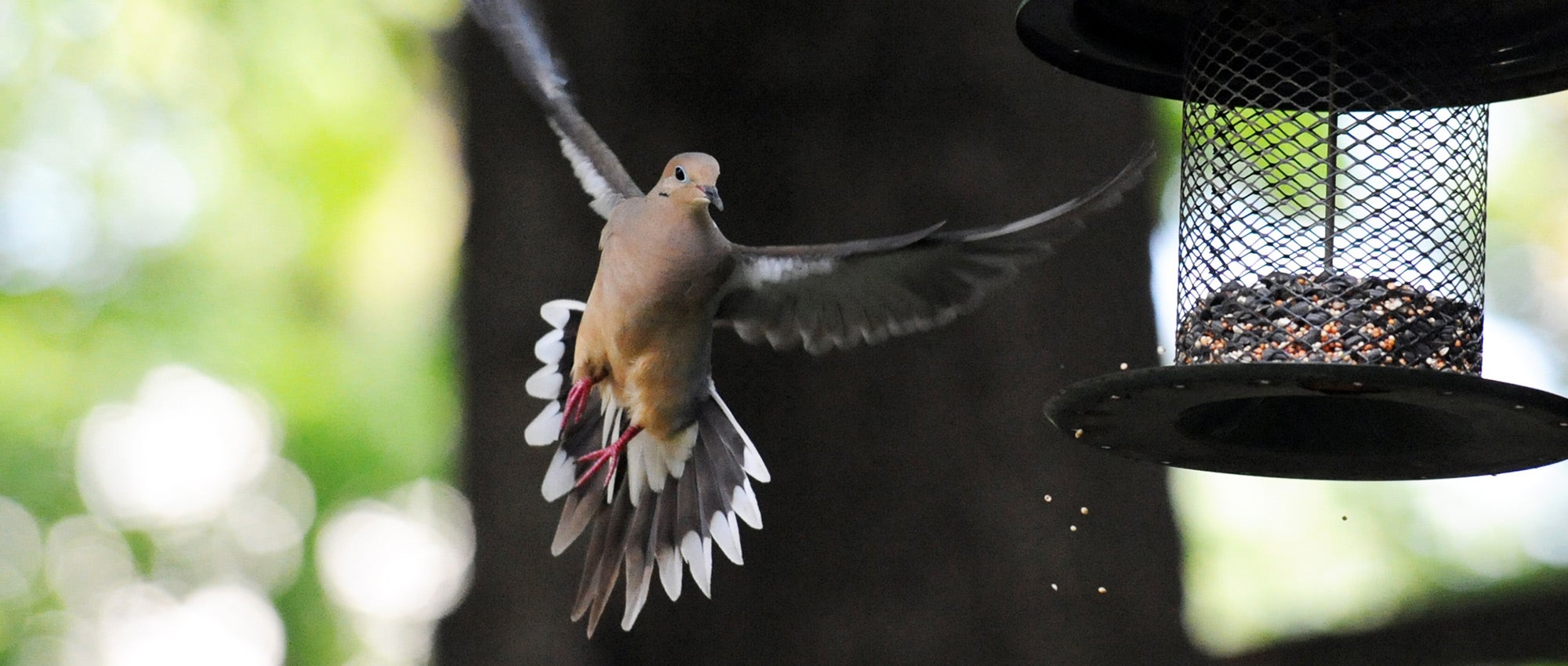
Credit: www.humanesociety.org
Seasonal Feeding Tips
Feeding wild birds in your backyard can be a rewarding experience. Birds have different needs during different seasons. Providing the right food at the right time helps them thrive. Here are some tips for feeding birds year-round.
Winter Feeding
Winter can be tough for birds. Natural food sources are scarce. Providing high-energy foods helps them stay warm.
- Suet: Suet is a great source of fat. It provides necessary energy.
- Peanuts: Peanuts offer protein and fat. Make sure they are unsalted.
- Nyjer Seeds: Nyjer seeds attract finches. They are rich in oil.
Spring And Summer Diets
In spring and summer, birds’ diets change. They need more protein for breeding and raising young.
- Mealworms: Mealworms are high in protein. Birds love them.
- Fruit: Offer slices of oranges, apples, or berries. These provide vitamins.
- Sunflower Seeds: Sunflower seeds are versatile. They attract many species.
By understanding birds’ needs during different seasons, you help them thrive. Happy bird watching!
Creating A Bird-friendly Habitat
Feeding wild birds in your backyard starts with creating a welcoming environment. A bird-friendly habitat attracts various species and keeps them coming back. Focus on providing native plants and water sources to create the perfect haven for birds.
Native Plants
Native plants are crucial for attracting local bird species. They provide food, shelter, and nesting places. Choose plants that produce berries, seeds, and nectar. Here are some examples:
- Berries: Serviceberry, Elderberry
- Seeds: Sunflowers, Coneflowers
- Nectar: Bee Balm, Trumpet Vine
These plants support the local ecosystem and require less maintenance. They are adapted to the local climate and soil, making them easier to grow. Birds will be naturally drawn to these plants, ensuring your backyard becomes a busy bird haven.
Water Sources
Birds need water for drinking and bathing. Providing a clean and reliable water source can attract a variety of bird species. Consider the following options:
- Birdbaths: Choose shallow basins with sloping sides.
- Fountains: Moving water attracts birds and keeps it fresh.
- Ponds: Add some rocks for birds to perch on.
Ensure the water is clean and free from chemicals. Change the water regularly to prevent it from becoming stagnant. In winter, use a heater to keep the water from freezing. Birds will appreciate the effort and visit your backyard more often.
Avoiding Common Mistakes
Feeding wild birds in your backyard is a rewarding activity. But you must avoid common mistakes to ensure the safety and health of your feathered visitors. In this section, we will discuss key points like overfeeding and predator prevention.
Overfeeding
Overfeeding can be harmful to birds. It might attract pests and lead to spoiled food. Birds need a balanced diet, not just seeds and nuts. Change the food daily to keep it fresh.
- Offer small amounts of food at a time.
- Clean the feeders regularly.
- Provide a variety of food types.
Use a mix of seeds, fruits, and insects. This ensures birds get the nutrients they need. Avoid feeding birds bread. It lacks essential nutrients and can cause health problems.
Predator Prevention
Predator attacks are a common threat to backyard birds. Protect your feeders from cats, hawks, and other predators. Use baffles and place feeders in safe locations.
| Predator | Prevention Method |
|---|---|
| Cats | Place feeders high and away from branches. |
| Hawks | Provide cover with shrubs or trees. |
| Squirrels | Install squirrel baffles on feeders. |
Also, keep the area clean. Fallen seeds attract unwanted animals. Regular maintenance of the feeding area helps minimize risks. Create a safe environment for your feathered friends.
Identifying Backyard Birds
Feeding wild birds is a delightful hobby. But to start, you need to identify the birds in your backyard. Knowing the species helps you provide the right food. It also makes birdwatching more enjoyable. Here, we will discuss common species and the tools needed for birdwatching.
Common Species
Some birds are more common in backyards than others. Here are a few you might see:
| Bird | Description | Preferred Food |
|---|---|---|
| House Sparrow | Small, brown and gray | Seeds, crumbs |
| Northern Cardinal | Bright red, pointed crest | Sunflower seeds, peanuts |
| Blue Jay | Blue with white chest | Acorns, suet |
| American Goldfinch | Yellow with black wings | Thistle, sunflower seeds |
Birdwatching Tools
To better identify birds, you need some tools. Here are the essentials:
- Binoculars: A good pair helps you see birds up close.
- Bird Guide: A book with pictures and info about birds.
- Notebook: Write down what you see. This helps you remember.
- Camera: Take pictures to identify birds later.
Using these tools makes birdwatching easier. You can spot and identify different species. This adds to the joy of feeding birds in your backyard.

Credit: www.usatoday.com
Enjoying The Experience
Feeding wild birds in your backyard is a delightful way to connect with nature. It brings joy and a sense of peace. But the experience goes beyond just feeding them. You can make it even more enjoyable by documenting the moments, involving your family, and appreciating the beauty of these feathered visitors.
Photography Tips
Taking photos of birds can be both fun and challenging. Here are some tips to help you capture great shots:
- Use a telephoto lens: Birds are small and often far away. A telephoto lens helps you capture detailed images.
- Be patient: Birds move quickly. Wait for the perfect moment.
- Focus on the eyes: Sharp eyes make the photo come alive.
- Morning light: The light is soft and warm in the morning, perfect for photos.
Family Involvement
Feeding birds can be a wonderful family activity. Here are some ideas to get everyone involved:
- Build bird feeders together: Use simple materials like pine cones, peanut butter, and birdseed.
- Identify birds: Use a bird guidebook to identify different species. Make it a game for kids.
- Keep a bird journal: Write down the types of birds you see, their colors, and behaviors. Draw pictures of them.
By following these tips, you can enjoy the experience of feeding wild birds even more. It’s a great way to bond with nature and with your family.
Frequently Asked Questions
What Should I Feed Wild Birds?
You should feed wild birds a variety of seeds, nuts, and fruits. Common options include sunflower seeds, suet, and mealworms.
How Often Should I Refill Bird Feeders?
Refill bird feeders as soon as they are empty. This ensures that birds have consistent access to food.
Can Wild Birds Eat Bread?
It is not recommended to feed wild birds bread. Bread lacks the necessary nutrients and can be harmful.
What Attracts Wild Birds To Feeders?
Wild birds are attracted to feeders with fresh food, water sources, and safe, quiet locations.
Conclusion
Feeding wild birds in your backyard is rewarding. Provide fresh food regularly. Use clean feeders to prevent disease. Offer a variety of seeds and suet. Fresh water is essential too. Create a safe habitat with bushes and trees. Enjoy the beauty and songs of visiting birds.
Your efforts help local wildlife thrive. Happy birdwatching!
Hello Dear, I'm Poli Kolymnia, owner of many birds (including budgies).
With a deep passion for these feathered companions, I'm here to share my expertise and extensive knowledge on birds care.
My articles cover essential topics like diet, housing, care, and health, providing practical tips to help you create a happy and thriving environment for your birds.


